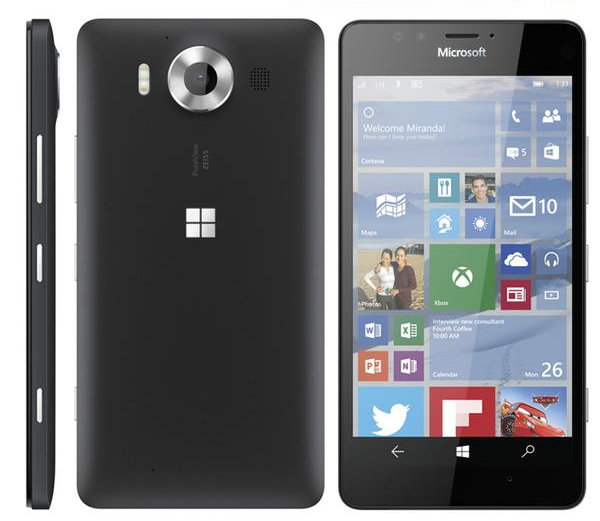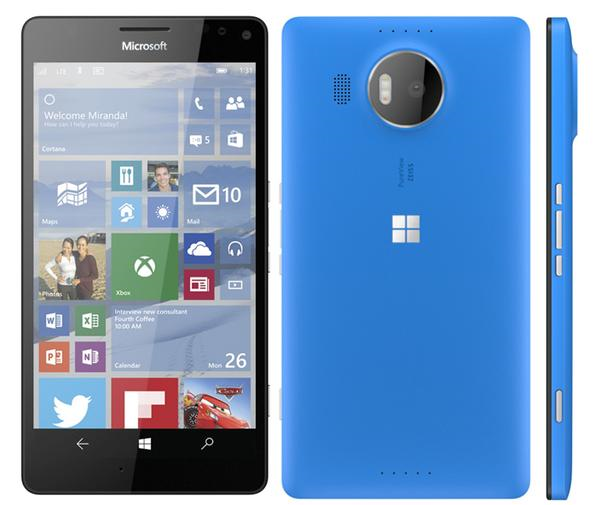The world is changing indeed! Famed leaker @evleaks or Evan Blass has leaked out what looks like legitimate renders of the upcoming Microsoft flagships and things don’t look too good, Both Cityman and Talkman are visible in crystal clear renders and frankly speaking, it appears that Microsoft took the budget Lumia 640 XL and simply switched a few components. Clearly, a lot of Windows Phone fans will be missing Nokia today. While Windows Phone fans will be disappointed, there is some good news. We also have details about the hardware specifications of these two upcoming flagships (since there is no choice anyways).

For the Talkman which is the smaller one of the two:
=>We get a 5.2 inch WQHD (2560 x1440 pixels) OLED display
=>Inside there is hexa-core Qualcomm Snapdragon 808, with 3 GB of RAM and 32 GB of internal memory (expandable)
=> For the camera, there is a 20 MP PureView unit on the back and a 5 MP wide-angle unit up front =>The device will pack in the usual connectivity options along with a USB Type C port and Qi Wireless charging via a flip cover
=>All of the above will be powered by a removable 3000 mAh battery

Coming to the Talkman’s elder sibling the Cityman:
=>We get a 5.7 inch WQHD (2560 x1440 pixels) OLED display
=>Inside there is octa-core Qualcomm Snapdragon 810, with 3 GB of RAM and 32 GB of internal memory (expandable)
=>For the camera, there is a 20 MP PureView unit on the back with what appears to be a triple LED flash and a 5 MP wide-angle unit up front
=>The device will pack in the usual connectivity options along with a USB Type C port and Qi Wireless charging built-in
=>All of the above will be powered by a removable 3300 mAh battery
Both smartphones are expected to sport a polycarbonate body, with the Cityman also showing off its aluminium side-buttons. As for “the world is changing” bit, it is, and so are the times. It is now a time when Samsung is producing polished and refreshed designs made of metal and glass, while Microsoft (dare we say Nokia) with its acquired Nokia bits is making a fool of the brand with designs like we have seen today.

For the Talkman which is the smaller one of the two:
=>We get a 5.2 inch WQHD (2560 x1440 pixels) OLED display
=>Inside there is hexa-core Qualcomm Snapdragon 808, with 3 GB of RAM and 32 GB of internal memory (expandable)
=> For the camera, there is a 20 MP PureView unit on the back and a 5 MP wide-angle unit up front =>The device will pack in the usual connectivity options along with a USB Type C port and Qi Wireless charging via a flip cover
=>All of the above will be powered by a removable 3000 mAh battery

Coming to the Talkman’s elder sibling the Cityman:
=>We get a 5.7 inch WQHD (2560 x1440 pixels) OLED display
=>Inside there is octa-core Qualcomm Snapdragon 810, with 3 GB of RAM and 32 GB of internal memory (expandable)
=>For the camera, there is a 20 MP PureView unit on the back with what appears to be a triple LED flash and a 5 MP wide-angle unit up front
=>The device will pack in the usual connectivity options along with a USB Type C port and Qi Wireless charging built-in
=>All of the above will be powered by a removable 3300 mAh battery
Both smartphones are expected to sport a polycarbonate body, with the Cityman also showing off its aluminium side-buttons. As for “the world is changing” bit, it is, and so are the times. It is now a time when Samsung is producing polished and refreshed designs made of metal and glass, while Microsoft (dare we say Nokia) with its acquired Nokia bits is making a fool of the brand with designs like we have seen today.






